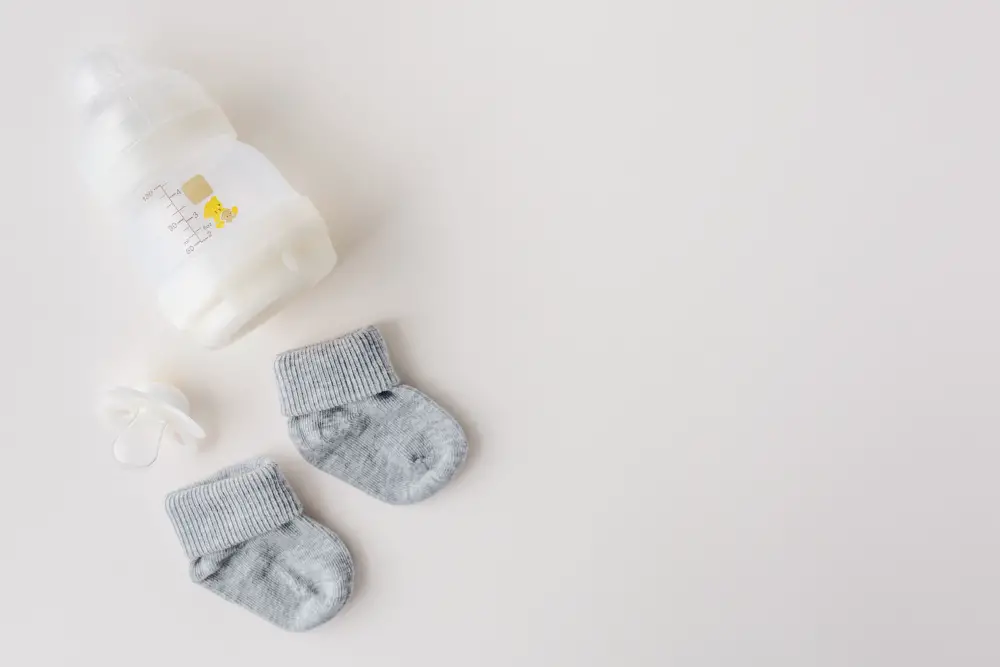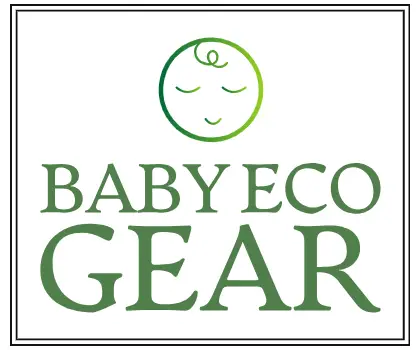Eco-friendly baby products are gaining popularity as parents become more conscious of the impact their choices have on the environment. When it comes to choosing the best eco-friendly baby products, it’s important to consider various measures and certifications that indicate their sustainability and safety. In this article, we’ll provide you with 10 comprehensive reviews of eco-friendly baby products, along with guidelines on how to evaluate and rate them based on specific measures and certifications.
Baby Product Reviews: The Rising Popularity of Eco-Friendly Choices

In recent years, there has been a notable surge in the popularity of eco-friendly baby products, driven by the increasing environmental consciousness among parents. As moms and dads recognize the profound impact their choices have on the planet, they are actively seeking out baby products that align with their commitment to sustainability. When it comes to selecting the best options for their little ones, considering various measures and certifications that indicate both the products’ eco-friendliness and safety becomes paramount.
In this comprehensive article, we delve into the world of eco-friendly baby products, providing you with ten detailed reviews that cover a range of essential items. From diapers and clothing to toys and feeding accessories, we explore the top choices available in the market. Our aim is to equip you with the knowledge and insights necessary to make informed decisions about the products you bring into your home.
Moreover, we understand that evaluating and rating these eco-friendly baby products can be a daunting task. To assist you in this process, we offer practical guidelines and criteria based on specific measures and certifications. By considering factors such as materials used, manufacturing processes, and certifications, you can confidently assess the sustainability and safety of each product.
Join us on this eco-conscious journey as we navigate the world of baby product reviews, exploring the rising popularity of eco-friendly choices. By making informed decisions, we can create a brighter and healthier future for our little ones, while nurturing a more sustainable planet for generations to come.
Evaluating Eco-Friendly Baby Products:

When it comes to assessing the eco-friendliness of baby products, there are several crucial factors to consider. By examining the following aspects, you can make informed decisions that align with your values and contribute to a greener future.
Materials Used:
The choice of materials plays a pivotal role in determining the environmental impact of baby products. When evaluating eco-friendly options, it’s important to look for items made from organic, biodegradable, or recycled materials. These sustainable material choices help minimize resource depletion and reduce waste. Organic materials, such as organic cotton or bamboo, are grown without the use of harmful pesticides and promote healthier ecosystems. Similarly, biodegradable materials, like plant-based plastics, break down naturally and reduce landfill waste. Additionally, products that avoid harmful chemicals and toxins, such as phthalates or BPA, are highly recommended to ensure the safety of your baby and the environment.
Manufacturing Process:
Understanding the manufacturing process provides valuable insights into a product’s overall eco-friendliness. Look for companies that prioritize sustainable practices throughout their production chain. One important aspect is the use of renewable energy sources in manufacturing facilities. Companies that utilize solar or wind power significantly reduce their carbon footprint and contribute to a cleaner energy future. Another key consideration is waste reduction. Manufacturers that implement strategies to minimize waste generation and promote recycling or upcycling demonstrate their commitment to environmental stewardship. Additionally, supporting companies that follow fair labor practices ensures that the products you choose are ethically produced, providing a positive impact on both workers and the environment.
By carefully examining the materials used and the manufacturing processes employed, you can gain a deeper understanding of the eco-friendliness of baby products. This knowledge empowers you to make conscious choices that not only prioritize the well-being of your child but also contribute to a more sustainable and greener future for all.
Certification Standards for Baby Product Reviews:

Certifications are essential in verifying the eco-friendly claims of baby products. When making your purchasing decisions, it’s crucial to consider the following widely recognized certifications:
Organic Certifications:
Look for baby products that carry reputable organic certifications, such as the Global Organic Textile Standard (GOTS) or the USDA Organic label. These certifications guarantee that the products meet stringent organic criteria throughout their entire supply chain. For textiles and fabrics, GOTS ensures that the materials are grown and processed without the use of harmful chemicals or genetically modified organisms (GMOs). Similarly, the USDA Organic label ensures that food and personal care items are made from ingredients that are organically grown and free from synthetic pesticides or fertilizers. By choosing products with these certifications, you can be confident that they align with your eco-friendly goals and provide a healthier and safer environment for your baby.
Forest Stewardship Council (FSC) Certification:
When considering wooden baby products, such as cribs or toys, look for the Forest Stewardship Council (FSC) certification. This certification ensures that the wood used in these products is sourced from responsibly managed forests. By promoting sustainable forestry practices, the FSC certification helps protect biodiversity, prevent deforestation, and support local communities. Choosing baby products with the FSC certification demonstrates your commitment to environmental conservation and ensures that the wood used is derived from sustainable and ethical sources.
By prioritizing products with reputable certifications like GOTS and FSC, you can have confidence in the eco-friendliness and sustainability of the baby products you choose. These certifications serve as reliable indicators of the products’ adherence to strict environmental standards, giving you peace of mind and contributing to a greener future for both your baby and the planet.
Rating Eco-Friendly Baby Products:

Assigning ratings to eco-friendly baby products is a helpful way to simplify the decision-making process and identify the most suitable options. When evaluating and rating baby products, it’s important to consider the following factors:
Safety Standards:
When reviewing baby products, it’s crucial to prioritize safety. Discuss the importance of assessing safety features, such as non-toxic materials, secure fastenings, and the absence of choking hazards. Highlight the significance of choosing products that have undergone rigorous safety testing and adhere to relevant industry standards. Explain how these safety measures contribute to providing a secure environment for babies and peace of mind for parents.
Durability and Longevity:
A key aspect of eco-friendly baby products is their durability and longevity. Highlight the importance of selecting products that are built to last, reducing the need for frequent replacements and minimizing waste. Discuss how durable products not only save money but also contribute to sustainable practices by reducing the overall environmental impact. Mention specific features or materials that enhance product durability, such as robust construction or high-quality materials.
Functionality and Ease of Use:
Emphasize the value of products that offer practicality and ease of use for parents and caregivers. Discuss how well-designed baby products that cater to the needs of both parents and babies can make daily routines more manageable. Provide examples of user-friendly features such as adjustable settings, intuitive interfaces, or ergonomic designs that enhance usability. Highlight how functional products can contribute to a positive parenting experience while also promoting sustainability through efficient use.
Environmental Impact:
Address the environmental impact of baby products and the importance of considering eco-friendly manufacturing processes. Discuss the significance of using sustainable materials, such as organic fabrics, recycled plastics, or responsibly sourced wood. Explain the concept of recyclability and how it contributes to reducing waste. Mention any certifications or eco-labels that consumers can look for to identify environmentally conscious products. Also, discuss the benefits of reduced carbon footprint in manufacturing and transportation processes.
Health Considerations:
Touch upon health-related factors associated with baby products. Discuss the benefits of choosing products made from allergen-free materials, as it helps minimize potential allergic reactions and promotes a healthier environment for babies. Highlight organic options that are free from harmful chemicals or pesticides, emphasizing their potential positive impact on a baby’s health. Encourage readers to consider the potential long-term health benefits of selecting such products for their little ones.
User Reviews and Feedback:
Stress the importance of seeking and contributing to user reviews when evaluating baby products. Explain how user reviews provide valuable real-life experiences and insights into the performance, safety, and suitability of products. Encourage readers to consult trusted sources for unbiased reviews and to share their own experiences to help other parents make informed decisions. Highlight the power of collective feedback in guiding consumer choices towards eco-friendly and reliable products.
Cost-Effectiveness:
Discuss the long-term cost benefits of investing in quality eco-friendly baby products. Explain how these products, despite potentially having a higher upfront cost, can offer savings over time. Highlight the durability, reusability, and extended lifespan of eco-friendly products, which can reduce the need for frequent replacements. Discuss how such products can contribute to budget-friendly parenting while also aligning with sustainable practices.
By addressing these aspects in your article, you can provide readers with a comprehensive understanding of how to evaluate and review eco-friendly baby products.
Conclusion:
As parents, it is our responsibility to select eco-friendly baby products that contribute to a healthier and greener future for our children. By taking into account crucial factors such as materials, manufacturing processes, and certifications, as well as utilizing a rating system based on sustainability and safety, we can make informed choices that align with our values.
The ten comprehensive eco-friendly baby product reviews presented in this article serve as a valuable guide on your journey towards a more environmentally conscious parenting experience. By considering the eco-friendliness of materials, assessing manufacturing practices, and seeking out reputable certifications, you can make educated decisions that prioritize the well-being of your baby and the planet.
Remember, each choice we make has an impact, and by opting for eco-friendly baby products, we play an active role in creating a sustainable future. Let us embrace this responsibility and strive to provide our little ones with products that are not only safe but also contribute to a greener and brighter world.

1 thought on “Top 10 Eco-Friendly Baby Product Reviews: Unleashing the Power of Sustainability for a Better Future”